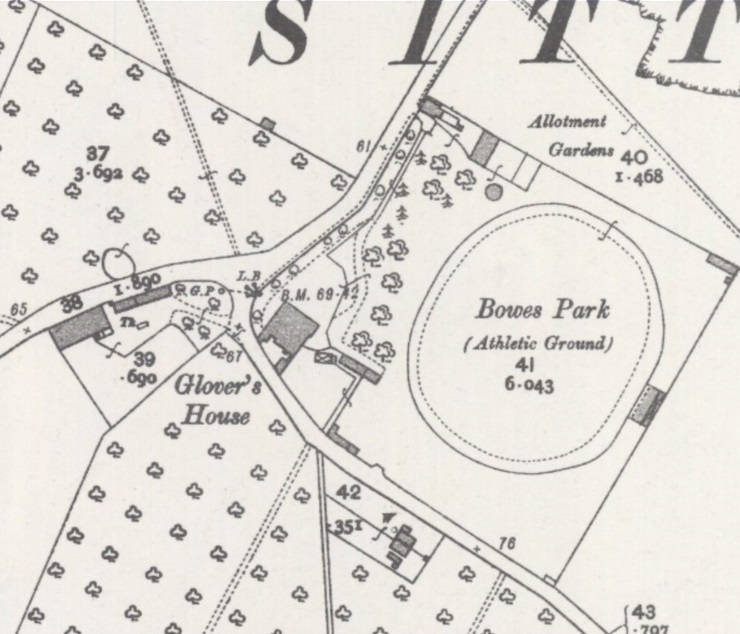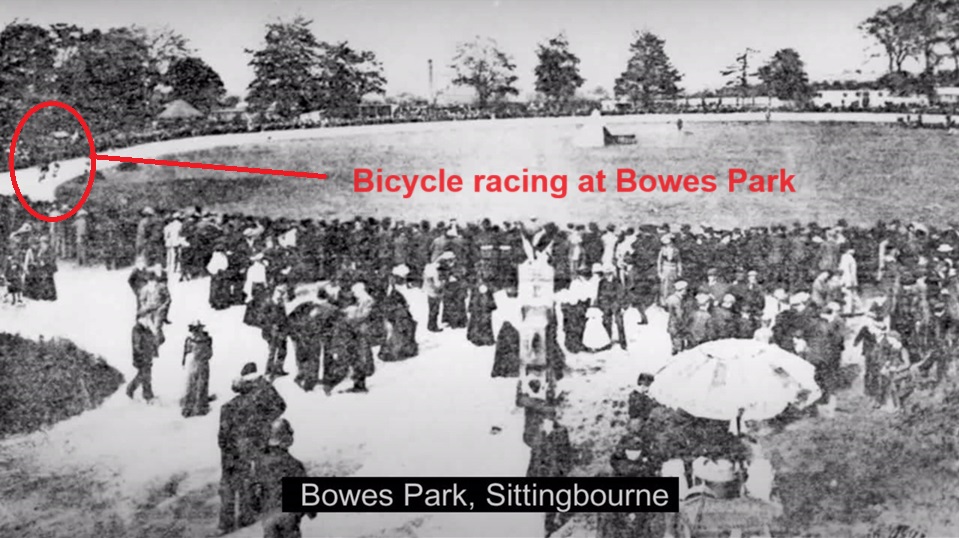


The new ground opened on Easter Monday 1903, with 5,000 spectators enjoying the sports, funfair and amusements. The London crack EJ Callaghan, who won the Surrey Challenge Cup, rode at the meeting and won the one mile and five miles handicap races off scratch. The meeting finished with a firework display by Brocks. Training on the track was available for two pence per day or half a crown for the season.
The next sports meeting was on Whit Monday 1903, the crowd of 10,000 people were entertained with acrobats, clown cricketers and a stage variety concert. EJ Callaghan again rode well to win the ten miles scratch race for a silver cup and £10. There was an August Bank holiday sports meeting and EJ Callagham again won the ten miles scratch race, but G Flint won the one, two and five miles races. The final event of the year was the Sittingbourne Cycle Club sports meeting on 9th September 1903 with club and inter-club cycle races.
Mr Bowes organise three big meetings in 1904, on Easter Monday, Whit Monday and August Bank Holiday, the Whitsun meeting had the biggest crowd ever seen at Bowes Park with 9,000 spectators. On July 9th 1904 the Sittingbourne CC held their second annual sports at Bowes Park, which was organised by Dr F Noble, vice-president of the club, but the attendance at 700 was disappointing. The restriction of racing to local clubs was blamed for the lack of public interest in the races.
At the Easter Monday meeting in 1905 there was an attendance of 3,000 but complaints of crawling in the races were made. The Whit Monday sports that year was twice delayed by bad weather, but still attracted 1,500 spectators. Gore Court Park re-opened with a meeting on Whit Monday 1905, this was in direct competition with the meeting at Bowes Park on the same day. Both venues advertised extensive programs of sports and entertainments and Bowes Park attracted 4,000 spectators. The Gore Court meeting was postponed until 1st July and attracted 1,500 spectators.
The meeting on July 7th 1906 included the NCU Kent area quarter and one mile championships and the 1907 Whit Monday meeting at Bowes Park attracted 5,000 spectators. George Bowes must have been disappointed with the reduced crowds and he moved on to promote a travelling theatre company. In 1907 Glovers was advertised to rent but race meetings continued to be held there. The last bicycle racing at Bowes Park was the August Bank Holiday meeting in 1910 and George Bowes died in 1913.
After the outbreak of the First World War, the Glovers opened as a Voluntary Aid Detachment hospital in 1915 and closed in 1919. Bowes Park was used for tennis into the 1930s and was then developed for housing in the area now called Greyshott Close.